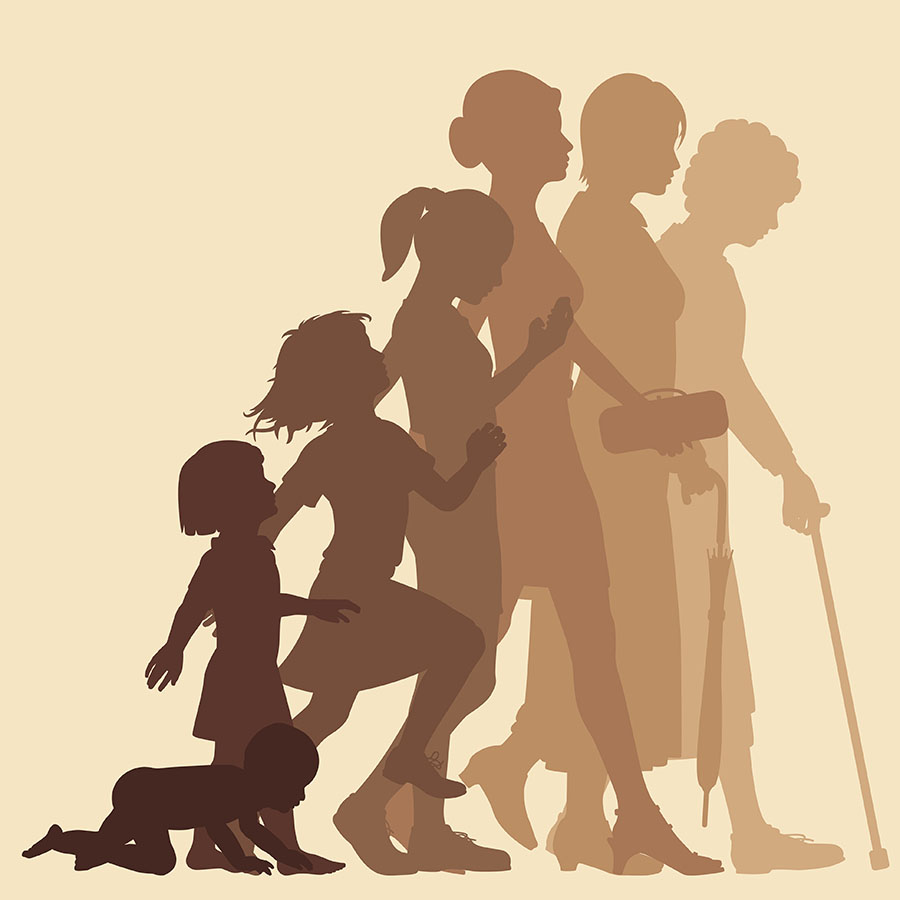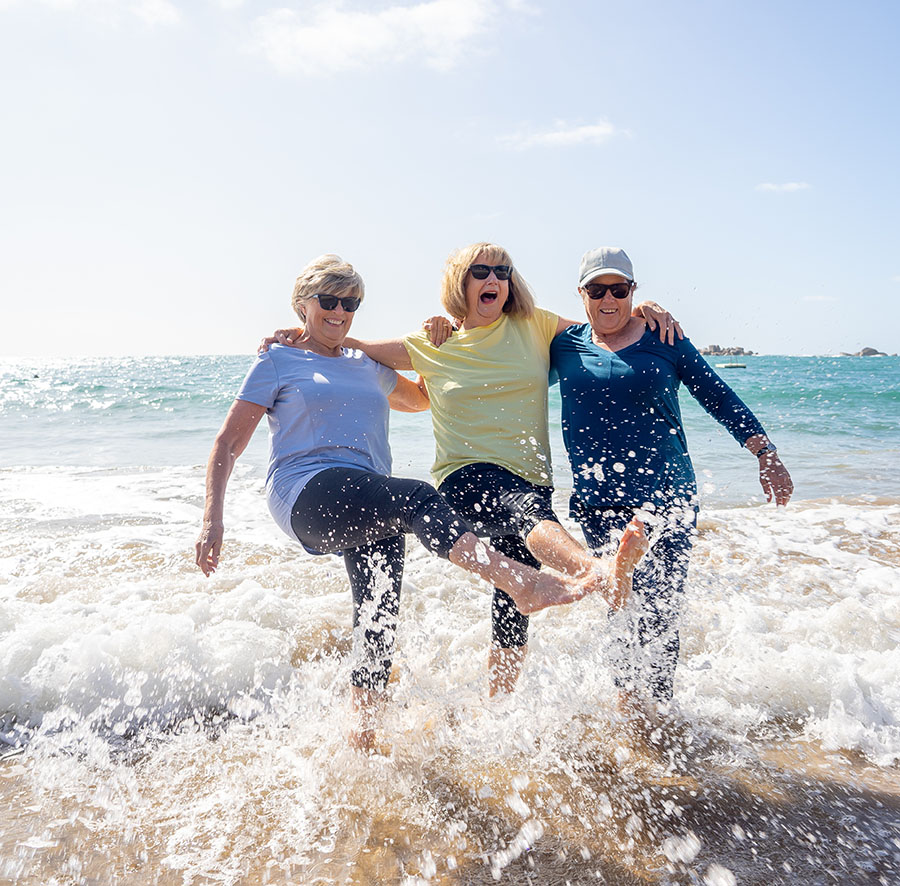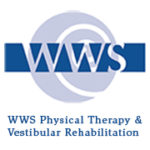“Getting old ain’t for sissies, but it’s better than the alternative.” My patients often lament the woes of aging. While there are challenges that come along with growing older, there are ways to be proactive about promoting healthy aging. (image Evolution from Birth to Seniority)

Arguably, the simplest but sometimes most challenging thing that you can do as you age is to be active. Countless studies have shown that seniors who exercise regularly and remain physically active reap benefits that include maintaining function and independence, preventing or treating chronic diseases such as diabetes and heart disease, and improving fatigue.
When considering an exercise program, you want to incorporate three main categories of exercise. Balance exercises decrease your risk of falling, which is a major contributor to disability in elders. Flexibility exercises maintain movements important for daily activities. Strengthening exercises maintain muscle strength and decrease the risk of osteoporosis. If you are not sure where to focus your exercise program, a physical therapist is able to develop a routine tailored specifically to your individual needs.
Your exercise program should also include some form of cardiovascular exercise which involves increasing your heart and respiratory rates to keep your heart and lungs healthy. The World Health Organization recommends that seniors get at least 150 minutes of moderate-intensity cardiovascular exercise or 75 minutes of vigorous-intensity cardiovascular exercise per week. If you imagine a 10-point scale where 0 is resting in bed and 10 is running for your life, moderate-intensity exercise is a perceived exertion of 3 to 5 out of 10. This means that you should be a little out of breath and a little sweaty but still be able to carry on a conversation. Vigorous-intensity exercise is exercising at a 6 to 7, where you are slightly more out of breath and a conversation would be difficult but not impossible.

For someone who has been more sedentary, seated exercise may be enough intensity, while a more- active person may need to do a brisk walk or even a light jog. Be sure to pick something that you enjoy: remember that you need to exercise 75-150 minutes per week! Examples of cardiovascular exercise include walking, running, biking, swimming, rowing, dancing, and water aerobics. As long as it makes you a little tired and a little sweaty, it counts! Always speak with your doctor before beginning an exercise program to ensure that your heart and lungs are healthy enough to tolerate the increased workload.

It is also recommended to make daily changes to your routine to be as active as possible. Take the stairs rather than the elevator, park farther away from the store, or stand up and sit down from your chair a few times per hour.
In addition to regular exercise, nutrition is important for a healthy lifestyle, and our nutritional needs change as we get older. A good source of information for seniors is MyPlate.gov, where you can interact with and learn about the five different food groups and the proportions important for a healthy diet. It is important to eat a varied diet since different foods provide different nutrients. You may also need to speak with a doctor or nutritionist about vitamin supplements if you are not fulfilling your requirements with your dietary intake. It is always important to talk with a professional prior to taking any supplements since more is not always better and supplements can interfere with the effectiveness of certain medications.

Mental health is just as important as physical health as we age. Hobbies, socializing, and leisure activities can promote higher levels of happiness and lower levels of depression in older adults. Studies have shown that people who participate in “meaningful activities”, such as volunteering in the community, report feeling healthier and happier. People who are socially isolated have higher risks of depression and dementia compared to their peers. This has been an issue during the pandemic, as many people’s social circles have shrunk and people have been spending more time at home. Thankfully, the weather is getting warmer and more people are vaccinated, increasing the opportunity to socialize safely with family and friends. The National Institute on Aging has numerous resources online including this page with information on participating in activities that you enjoy.
Getting older doesn’t have to mean a lower quality of life, but it is important to be proactive about your health. Medicare covers a number of preventive and screening services (for a full list, visit https://www.medicare. gov/coverage/preventive- screening-services). Many people assume that pain and dizziness come with age. While it may be normal to experience some aches and pains as we get older, pain that limits your participation in daily life should be evaluated by a doctor or physical therapist. The earlier that you get attention, the more likely you will be to achieve pain relief.
Dizziness is not a normal part of aging and can contribute to an increased risk of falling. If you are dizzy, please seek treatment. Some physical therapy clinics such as ours at WWSPT specialize in the treatment of dizziness, which is also known as vestibular therapy. WWSPT Staff is available to help you maintain your function and quality of life well into your senior years.
The Department of Health and Human Services, the National Council on Aging, and the National Institute on Aging are great resources for additional information on healthy aging.

Dr.Kelsey Hanlon, PT, DPT,
WWS Physical Therapy and Vestibular Rehabilitation
Doylestown, PA.

Leave a Reply